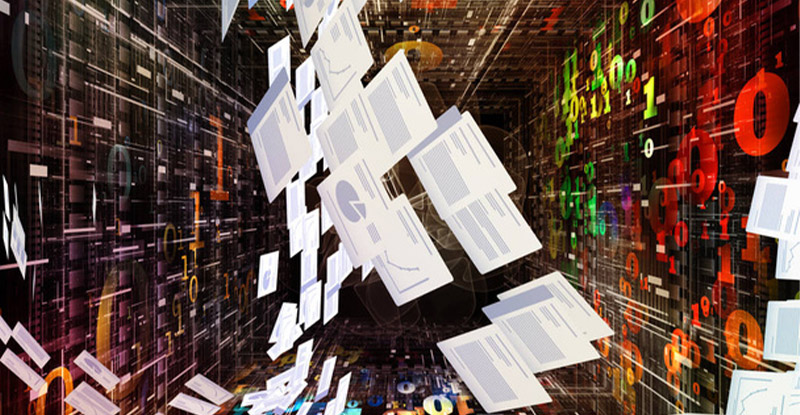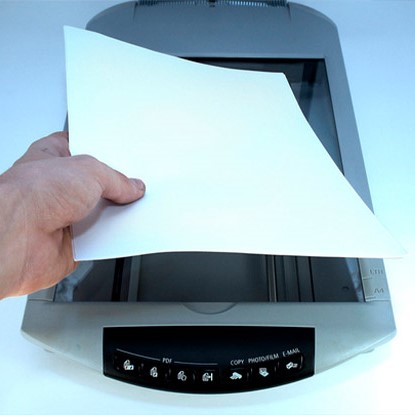OCR Capture vs. Artificial Intelligence: Different Role of OCR and AI in Document Processing


From standard OCR capture to the latest AI-driven OCR enhancements, we shed light on the transformative journey of document processing. Discover how AI-enhanced OCR docAlpha technology is reshaping the way we handle data.
In today’s digital age, document processing plays a vital role in the day-to-day operations of various businesses, from small startups to large corporations. Technologies such as OCR (optical character recognition) capture and artificial intelligence have revolutionized document processing, making it faster, more efficient, and more accurate.
But what are the major differences between online OCR capture and artificial intelligence, and why are they important to understand?
Discover the future of document management! Dive into docAlpha’s AI-enhanced OCR capabilities and transform your document processing like never before. Say goodbye to manual errors and hello to seamless digitization with docAlpha.
Book a demo now
OCR capture is a technology that converts handwritten or printed text from an image into machine-readable text that can be searched, edited, and shared. OCR capture has been around for years and is widely used in document processing, especially in industries such as education, healthcare, and finance.
OCR software technology, per OCR meaning, usually makes use of algorithms that identify and recognize characters in an image, such as letters, numbers, and symbols. OCR capture is an essential tool for businesses that need to digitize and archive large volumes of documents.
ADDITIONAL RESOURCES: OCR Document Processing: All You Need to Know
Artificial intelligence (AI) is a more advanced technology that has evolved from OCR capture. AI systems are designed to learn and adapt to new data and to produce results without being explicitly programmed, per artificial intelligence definition.
AI technology can analyze and interpret data in various formats, including images, audio, and text. In addition, AI systems can recognize patterns, extract meaningful insights from large datasets, and provide recommendations based on the data analyzed.
Overall, AI technology has a vast range of applications, including document processing, fraud detection, customer service, and more.
ADDITIONAL RESOURCES: Transforming Business with Artificial Intelligence: Strategies and Insights
Ready for a revolution in data extraction? Unleash the power of AI with docAlpha. From complex layouts to varied fonts, experience OCR on AI steroids and streamline your business processes today.
Book a demo now
Online OCR software and artificial intelligence are both useful for document processing, but they differ in their capabilities. OCR capture is good for converting images to text, but it has limitations when it comes to data analysis and interpretation.
On the other hand, AI technology can automatically categorize and analyze data, extract relevant information, and perform complex tasks using natural language processing (NLP) and machine learning (ML) algorithms. AI technology is better suited for tasks that require a more comprehensive understanding of the data.
ADDITIONAL RESOURCES: OCR Data Capture with Artificial Intelligence
OCR (Optical Character Recognition) and Artificial Intelligence (AI) are two distinct technologies, each with its own capabilities and applications. However, they can also complement each other in many use cases. Here’s a breakdown of their similarities and differences:
Step into the new age of document recognition! Let docAlpha’s AI-enhanced OCR redefine your expectations. Dive deeper, extract smarter, and move faster. Ready for the leap?
Book a demo now
For Online OCR, its main function is to convert different types of documents, such as scanned paper documents, PDF files, or images, into editable and searchable data. AI refers to machines or software mimicking cognitive functions such as learning, reasoning, and problem-solving. AI encompasses a broad range of applications beyond just data recognition.
Traditional OCR converter systems don’t have the capability to learn from data. They just convert visual representations of text into machine-encoded text. However, one of AI’s defining characteristics, especially in machine learning models, is the ability to learn and improve from experience without being explicitly programmed.
OCR converter mainly focuses on recognizing characters and converting them into digital text. AI can range from basic algorithms to highly complex neural networks that can perform tasks like image and speech recognition, decision-making, and predictions.
OCR converter is primarily used for data extraction and digitization from paper or image-based sources. On the other hand, AI has a wide range of applications including, but not limited to, predictive analytics, chatbots, personal assistants, autonomous vehicles, and healthcare diagnostics.
OCR accuracy can be affected by factors like image quality, font, or paper condition, and it typically does not have the innate capability to correct its mistakes. However, depending on the specific application, AI can be trained to recognize and even correct its errors, especially if built with feedback mechanisms.
While OCR and AI are distinct, they can be synergistically combined. For example, AI can enhance OCR technology by improving its accuracy in character recognition, especially in challenging conditions (e.g., low-quality scans or cursive writing). This combination has given rise to intelligent OCR systems that are more robust and adaptive than traditional OCR systems.
In summary, while OCR scanner is a specialized tool for recognizing text from images or documents, AI encompasses a vast field of machine intelligence applications, which can include and extend the capabilities of OCR.
Transform text recognition with intelligence! Why settle for traditional OCR when you can leverage the prowess of AI? Discover the magic of docAlpha and elevate your data extraction journey.
Book a demo now
AI-enhanced OCR systems and traditional OCR systems are both designed to convert images of text into machine-encoded text. However, their methodologies, capabilities, and performance can vary significantly. Here’s a breakdown of how AI-enhanced OCR systems differ from traditional OCR.
Traditional OCR scanner relies on predefined algorithms and rules to recognize text. It doesn’t inherently adapt or learn from new data. However, AI-enhanced OCR uses machine learning to improve and adapt based on the data it processes. Over time, it can learn from mistakes and recognize patterns, leading to improved accuracy.
Traditional OCR can struggle with variations in fonts, layouts, and poor-quality images. It often requires predefined templates or configurations for different types of documents. At the same time, AI-enhanced OCR is more robust in handling a variety of fonts, layouts, and even handwritten text. It can adapt to inconsistencies and deviations, thanks to its learning capabilities.
While a traditional OCR scanner can be highly accurate for clear, standardized texts, its accuracy can drop significantly with poor-quality scans, unusual fonts, or handwriting. On the other hand, AI-enhanced OCR text recognition generally offers higher accuracy rates, especially in challenging conditions, due to its ability to learn from vast amounts of data and correct its own mistakes.

Traditional OCR primarily focuses on character recognition without a deeper understanding of context. However, AI-enhanced OCR can often understand the context, making it better at recognizing and categorizing data in documents. For instance, it can differentiate between an address and a product description in an invoice.
Traditional OCR lacks innate capabilities for self-correction unless paired with manual verification or additional software layers. AI-enhanced OCR text recognition can have built-in mechanisms to recognize and correct errors, making the output more reliable without requiring as much human intervention.
Traditional OCR may struggle with complex documents with multiple columns, images, tables, and varying layouts. At the same time, AI-enhanced OCR can be trained to process complex document layouts more efficiently, identifying different elements like text blocks, images, and tables accurately.
Traditional OCR is sensitive to noise in data, like smudges, watermarks, or creases on a scanned document, which can lead to reduced accuracy. However, AI-enhanced OCR is better equipped to handle noisy data, filtering out irrelevant information and focusing on the text.
Traditional OCR might have limitations in scalability and integration with other modern systems. At the same time, AI-enhanced OCR is designed to be scalable and integrate seamlessly with other AI-driven systems, making it more suitable for dynamic, modern business applications.
As you can see, while traditional OCR systems have proven valuable for many applications, AI-enhanced OCR brings a new level of adaptability, accuracy, and context-awareness, making it increasingly favorable for a broader range of applications and more complex tasks.

Harness docAlpha’s AI-driven OCR text recognition capabilities and watch your documents come alive, offering insights like never before. Are you prepared for the transformation?
Absolutely! In fact, many contemporary solutions already combine the capabilities of an OCR application with the advanced features of AI to improve accuracy, flexibility, and efficiency in various applications. Here’s how they can be used together:
In essence, while OCR technology focuses on converting visual representations of text into machine-encoded text, AI adds a layer of intelligence, understanding, and adaptability to the process. The fusion of both technologies offers robust, efficient, and scalable solutions for various industries and applications.
Redefine your data game with AI! docAlpha brings you OCR, reimagined. Dive into a world where every character matters, every insight counts, and every document tells a story. Ready to embark on this journey?
Book a demo now
Choosing between OCR technology and AI for your project depends largely on the nature of the project, its specific needs, and the desired outcomes. Here’s a step-by-step guide to help you make an informed decision:
How crucial is accuracy for your project? If the utmost accuracy is essential, AI-enhanced OCR systems generally offer better results, especially in challenging conditions, as they learn and adapt over time.

Consider how the chosen solution will integrate with your existing infrastructure. AI-driven solutions often provide more flexibility in terms of integration with other systems and platforms.
If the project is part of a broader initiative, such as digital transformation or automation, investing in an AI-driven solution might provide more long-term benefits and align better with future projects.
Before committing, it’s always a good idea to test a few potential solutions. Many vendors offer trials or demos, which can give you a clearer picture of a system’s capabilities and limitations in a real-world context.
In summary, if your project involves straightforward text digitization with clear and consistent documents, traditional OCR might be sufficient. However, if you’re dealing with varied, complex, or large volumes of data, or if you seek deeper insights, adaptability, and scalability, an AI-enhanced OCR system would be more appropriate.
Experience the gold standard in OCR technology! Elevate your document processing with docAlpha’s AI-enhanced capabilities. Step into a realm where accuracy meets efficiency. Don’t wait – the future of OCR is here!
Book a demo now
The advancements in best OCR capture and AI technology have accelerated the pace of document processing, making it faster, more accurate, and more efficient. These technologies have streamlined workflows and given businesses more control over their document management systems.
As OCR capture and AI technology continue to evolve, the future of document processing looks promising. We can expect to see more sophisticated and robust systems that can handle more complex tasks and deliver even better results.
In conclusion, OCR capture and artificial intelligence are both critical technologies in document processing. While OCR capture is good for simple tasks like converting images to text, AI technology offers more advanced capabilities, such as data analysis and interpretation. The advancements in these technologies have made document processing faster, more accurate, and more efficient.
As OCR capture and AI technology continue to evolve, businesses will have more tools at their disposal to manage their document processing needs.
OCR stands for Optical Character Recognition. It’s a technology that converts different types of documents, like scanned paper documents, PDF files, or images, into editable and searchable data.
ADDITIONAL RESOURCES: Exploring the Benefits of OCR Technology Across Diverse Business Processes
AI, or Artificial Intelligence, refers to the simulation of human intelligence processes by machines, especially computer systems. This can involve learning, reasoning, self-correction, and problem-solving.
Even the best OCR cannot learn and adapt from its experiences. However, when integrated with AI capabilities, especially machine learning, OCR systems can improve in accuracy and adapt to various text styles and conditions.
OCR is suitable for digitizing printed documents or images, extracting data from invoices, forms, or receipts, making printed books available in digital format, and converting handwritten notes into digital text, although accuracy may vary.
AI is more appropriate for tasks that involve complex decision-making, predictive analysis, personalized user experiences, like chatbots or recommendation systems, image or speech recognition (beyond just text).
Unmatched precision, unparalleled insights! Unlock the full potential of your documents with docAlpha’s AI-driven OCR text capture. Say yes to smarter data extraction, deeper insights, and a streamlined workflow. Are you in?
Book a demo now
The accuracy of OCR can vary based on the quality of the source document, the clarity of the text, the font used, and the capabilities of the OCR software. Integrating AI can enhance its accuracy, especially in challenging conditions.
While AI can significantly enhance OCR text recognizing capabilities, the improvement depends on the quality of the AI training data and algorithms. A well-trained AI system can handle a variety of fonts, layouts, and even some handwriting, but it’s essential to have the right data and tools.
AI systems, especially those that require extensive training and sophisticated models, can be more expensive and resource-intensive than basic OCR systems. However, the long-term benefits, such as automation, efficiency, and insights, often justify the investment.
Remember, the line between OCR text recognizing and AI is blurring, with many OCR systems integrating AI capabilities for enhanced performance. Evaluate your specific needs and the available solutions to make an informed decision.